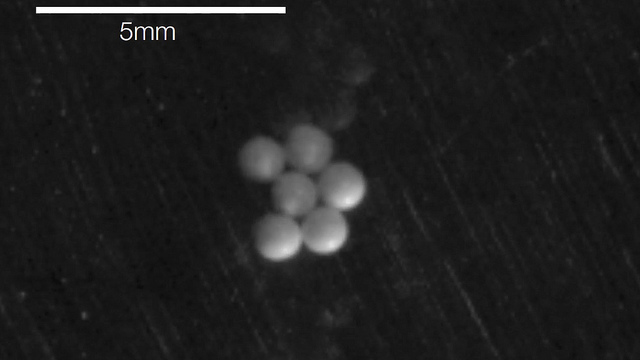Why – and how – do materials cluster together in the absence of gravity?
Scientists from the University of Chicago and the University of Bath are one step closer to finding the answer, thanks to a study in which they used sound waves to levitate particles.
The experiment gave the researchers new insights into how materials cluster together in the absence of gravity—principles which underlie everything from how molecules assemble to the very early stages of planet formation from space dust.
The team used sound waves to levitate plastic particles in midair—each about one millimeter in diameter, about the thickness of a penny—and studied how these particles interact with each other as they formed clusters, broke up and then reassembled into different configurations.
When there are five particles or fewer, they found, the particles cluster densely in only one configuration. However, when there are at least six particles, there are a number of different shapes they can form when brought together tightly.
By using high-speed cameras to track the levitated particles, the researchers were able to capture these various configurations. They found that groups of six particles can form three distinct compact shapes: parallelogram, chevron, and triangle. Adding one more particle to make seven meant that particles clustered together in one of four shapes, which scientists termed a flower, a turtle, a tree, or a boat.
One unique aspect of the experiments is that the sound not only levitates the particles but can also be used to affect how they interact as they float.
“A surprise was that by changing the sound wave frequency, we could manipulate the clusters and influence the shape that emerged,” said graduate student Melody Lim, the first author on the paper, which appeared in Nature Physics.
Modeling the physics behind such acoustic forces, which was done by co-first author Anton Souslov and professor of physics Vincenzo Vitelli, gives scientists a new means to control the assembly process.
Source: University of Chicago

